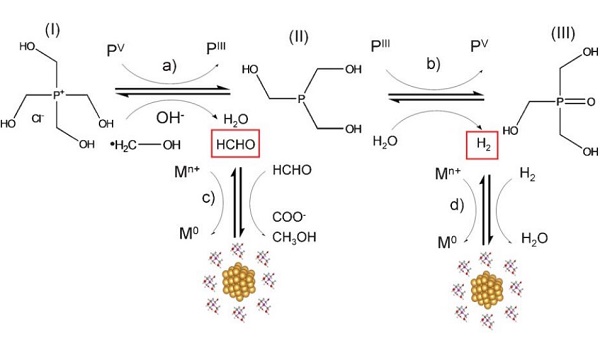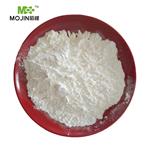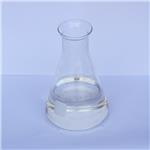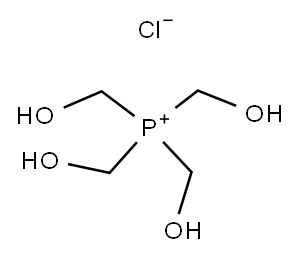The uses of Tetrakis (hydroxymethyl) Phosphonium Chloride
Dec 26,2023
Description
Tetrakis (hydroxymethyl) Phosphonium Chloride (THPC) is a water-soluble organophosphorus salt with a chemical formula [P(CH2OH)4]Cl. THPC is formed by treating phosphine with formaldehyde in the presence of hydrogen chloride and is used as an ingredient in flame-retardant chemicals. It has been used by textile industries mainly for cotton and cellulose fabric as a flame retardant and crease-resistant material. However, from industrial discharges, trace amounts of THPC can be leached into surface and groundwater, leading to potential environmental hazards [1].
Uses
The use of tetrakis-(hydroxymethyl)-phosphonium chloride (THPC) as a simultaneous reducing agent and stabilizing ligand has been extended to the single-step synthesis at room temperature of a wide variety of monometallic nanoparticles and bi-/tri- metallic nanoalloys containing noble metals with potential application in catalysis[2]. With its participation in the synthesis of:

Synthesis of gold nanoparticles
For the synthesis of Au nanoparticles, 3.0 mg of HAuCl4 was added to 15 mL of distilled water in a glass vial under magnetic stirring. Afterwards, 333 mL of a 65 mM THPC solution was added. After several minutes, 165 mL of a 1 M NaOH solution was added to the glass vial. The reaction mixture was kept at room temperature for 4 days and wrapped in aluminum foil to prevent photothermal decomposition. The product was kept in a refrigerator until further characterization.
Synthesis of platinum nanoparticles
In a typical synthesis of Pt nanoparticles, 100 mL of HPtClO4 8wt% solution was added to 15 mL of distilled water in a glass vial under magnetic stirring. Meanwhile, 333 mL of a 65 mM THPC solution was added. After several minutes, 165 mL of a 1 M NaOH solution was added to the glass vial. The reaction mixture was kept at room temperature for 4 days and wrapped in aluminum foil to prevent photothermal decomposition. The product was kept in a refrigerator until further characterization.
These nanoparticles have a high potential for application in various catalytic processes.
THPC is a phosphonium salt precursor to fire-retardant materials readily available in aqueous solution. Tetrakis(hydroxymethyl) phosphonium chloride (THPC) could be introduced as an inexpensive, amine-reactive, aqueous cross-linker for 3D cell encapsulation in protein-based hydrogels. THPC cross-linking is not only cell-compatible but supports the retention of cell function[3].
References
[1] Simpo Rose Ogwang Akech , Arpita Saha, Olajumoke Harrison . “Removal of a potentially hazardous chemical, tetrakis (hydroxymethyl) phosphonium chloride from water using biochar as a medium of adsorption.” Environmental Technology & Innovation 12 (2018): Pages 196-210.
[2] Hueso, José L. et al. “Beyond gold: rediscovering tetrakis-(hydroxymethyl)-phosphonium chloride (THPC) as an effective agent for the synthesis of ultra-small noble metal nanoparticles and Pt-containing nanoalloys†.” RSC Advances 26 (2013): 10427–10433.
[3] Cindy Chung, Sarah C. Heilshorn*, & Kyle J. Lampe. “Tetrakis(hydroxymethyl) Phosphonium Chloride as a Covalent Cross-Linking Agent for Cell Encapsulation within Protein-Based Hydrogels.” Biomacromolecules 13 12 (2012): 3912–3916.
- Related articles
- Related Qustion
- Tetrakis(hydroxymethyl)phosphonium Chloride: Applications as Covalent Cross-Linking Agent and Health Hazards Apr 11, 2024
Tetrakis(hydroxymethyl)phosphonium chloride is a versatile inorganic salt used in various industries for its properties, yet poses health and environmental risks.
- Tetrakis(hydroxymethyl)phosphonium chloride: Synthesis and Application Nov 30, 2022
Tetrakis(hydroxymethyl)phosphonium chloride can be used as flame retardant for textile post treatment, plastics, paper and other added flame retardant.
The method for the synthesis of berotralstat dihydrochloride relies on two fragments, berotralstat carboxylic acidFragment and chiral dibenzylamine.....
Dec 26,2023InhibitorsPhytosphingosine (PHS) is a sphingoid critical component of phytoceramides NP, AP, and EOP. PHS has been known to have anti-inflammation and antimicrobial activities and to stimulate epidermal differentiation.....
Dec 26,2023Biochemical EngineeringYou may like
- Benzhydrol:Melting point,Uses,Hazards
Mar 22, 2024
- What is Methoxypolyethylene glycol amine used for?
Mar 14, 2024
- What is 1,2-Dioleoyl-sn-glycero-3-phosphoethanolamine?
Mar 14, 2024
Tetrakis(hydroxymethyl)phosphonium chloride manufacturers
- Tetrakis(hydroxymethyl)phosphonium chloride
-

- $0.00 / 25kg
- 2024-05-09
- CAS:124-64-1
- Min. Order: 1kg
- Purity: 99%
- Supply Ability: 50000KG/month
- Tetramethyl phosphorus chloride (THPC)
-

- $1300.00 / 1400kg
- 2023-11-28
- CAS:124-64-1
- Min. Order: 1400kg
- Purity: 80%
- Supply Ability: 1000Ton/month
- Tetrakis(hydroxymethyl)phosphonium chloride
-

- $0.00 / 1KG
- 2023-09-06
- CAS:124-64-1
- Min. Order: 1KG
- Purity: 99%
- Supply Ability: 500000kg




